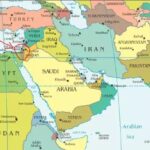A review of Choice In Schooling. By David Kirkpatrick.
Loyola University Press, 1990.
Choice In Schooling by American academic David Kirkpatrick is a detailed overview of the history of the idea of tuition vouchers. In it Kirkpatrick examines various formulations of the voucher scheme, and carefully answers criticisms of educational choice. Although written in the context of American education, the book’s arguments and analyses are wholly relevant to the educational situation in Australia.
Those who propose educational voucher schemes are usually greeted with three main objections: it is a new idea, it is an untested idea, and it is a radical idea. Kirkpatrick challenges each of these three assumptions.
Is the voucher concept a new one? Hardly, argues Kirkpatrick. The proposal first appeared in Adam Smith’s The Wealth of Nations in 1776. Although generally regarded as an economic text, this classic work has an extensive section on education in which Smith observes that those paid from the public purse, including teachers, lack the motivation for performance possessed by those in the private realm. In Book V there is a lengthy elaboration of this theme.
Smith’s arguments for the private funding of education are echoed in The Rights of Man published in London in 1792 by Thomas Paine. Paine argued that educational choice would promote competition among schools and lead to the success and profitability of the better ones. In 1779 Thomas Jefferson, as Governor of Virginia, introduced a school bill in which he recommended that the tuition be paid by the students.
In 1859 John Stuart Mill wrote his famous On Liberty in which, among other things, he distinguishes between a state requirement for an educated citizenry (which he approved) and a state provision of that education (which he opposed): “If the government would make up its mind to require for every child a good education, it might save itself the trouble of providing one. It might leave to parents to obtain the education where and how they pleased, and content itself with helping to pay the school fees of the poorer classes of children, and defraying the entire school expenses of those who have no one else to pay for them.”
Thinking about vouchers therefore can hardly be called new. Even the contemporary debate over vouchers is not new. An essay which ignited this contemporary phase, entitled `The Role of Government in Education’ by Milton Friedman, appeared back in 1955.
Is the concept untested? Again, hardly. Various forms of tuition vouchers and educational choice have been tried throughout the Western world for over a century now. Denominational school funding developed in Canada in 1867. Full financial equality between public and private education was achieved in 1917 in the Netherlands. Large scale public support of nonpublic institutions began in England in 1945. Vouchers have been in use in France since the early 1950s. In 1968 and 1977 the Canadian provinces of Quebec and British Columbia respectively initiated provincial grants to independent schools. Here in Australia major funding programs for both denominational and independent schools began in the 1970s. Programs in Ireland, Belgium and Denmark could be mentioned as well.
In Holland, one of the world’s most socialistic democracies, full educational choice came into effect in 1917. Article 23 of the Dutch Constitution not only guarantees the provision of education, public or private, but implicitly outlaws discrimination in funding. The results of this arrangement are revealing: in 1920 nearly 70 per cent of Dutch children attended public schools; today over 70 per cent attend private schools.
Lastly, Kirkpatrick refutes the idea that the voucher system is too radical. The really radical concept is that government should have such a pervasive hand in public education in the first place. In all other examples of government-provided services, such as hospitals, public housing and food programs, much greater allowance is made for choice than what we find in education. “The government doesn’t tell the family how often they should go to the hospital, and on what schedule; it doesn’t require that food can be obtained only if the government establishes the menu and operates the kitchen; yet it has no hesitancy in directing a child about what school to attend, on what days, in what classes, with which teachers, and what books to read.”
Indeed, says Kirkpatrick, “education is the last bastion of compulsory socialism providing social services to the general citizenry.” As John Stuart Mill warned over a century ago, “A general state education is a mere contrivance for moulding people to be exactly like one another; and as the mould in which it casts them is that which pleases the predominant power of the government, whether this be a monarch, a priesthood, an aristocrat, or the majority of the existing generation; in proportion as it is efficient and successful, it establishes a despotism over the mind, leading by natural tendency to one over the body.”
While the situation in Australia may not exactly coincide with that described by Mill, the need for educational reform, and the need for greater choice, are clearly pressing concerns. Will education vouchers solve all of the problems besetting Australian education? Obviously not; they are just one component of a much-needed renewal process. But as one voucher advocate put it when told that his proposal was no panacea, “I know it, but it is not competing with any panacea.” Almost everyone agrees that our current educational system is in need of major overhauling. Tuition vouchers will not cure everything. But their emphasis on market accountability and school-based autonomy is a major step in the right direction.
[915 words]



















